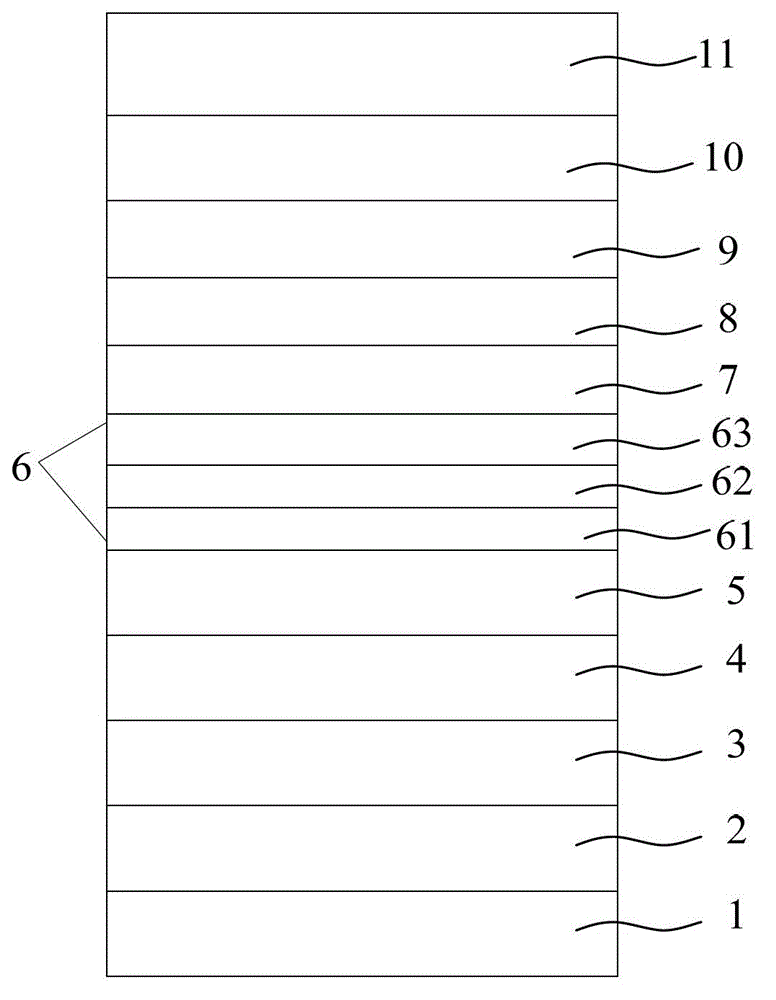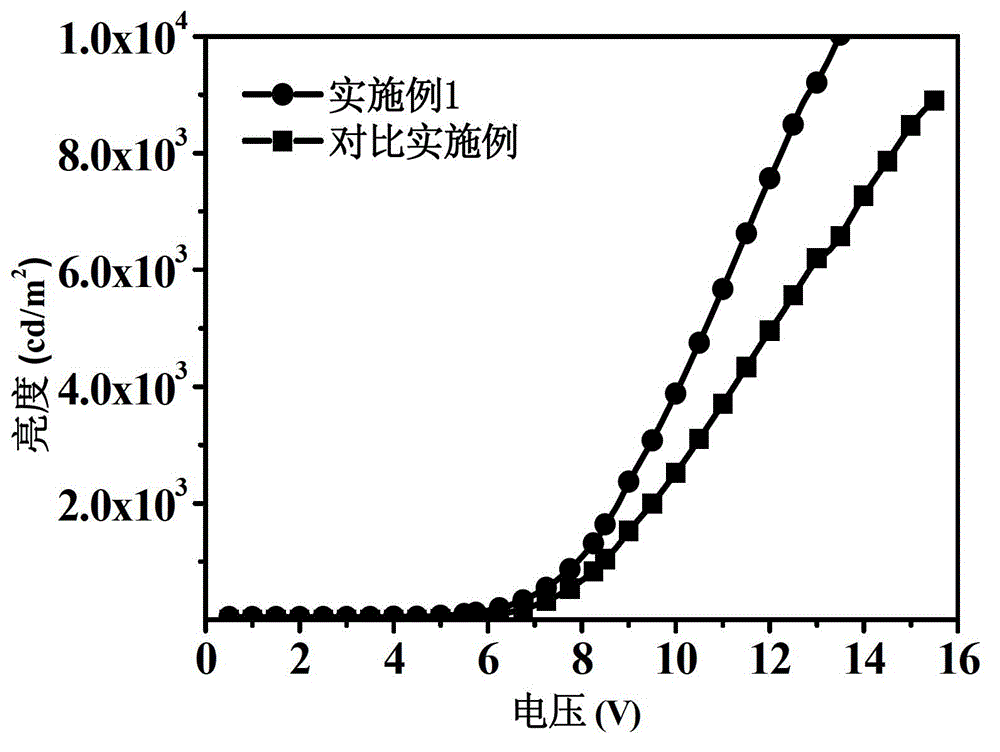Stacked organic light emitting device and preparation method thereof
An electroluminescent device, organic technology, applied in the direction of organic semiconductor devices, electro-solid devices, semiconductor/solid-state device manufacturing, etc. The problem of low luminous efficiency, etc., can improve the hole transport rate, avoid the existence of electron traps, and improve the effect of light scattering.
- Summary
- Abstract
- Description
- Claims
- Application Information
AI Technical Summary
Problems solved by technology
Method used
Image
Examples
Embodiment 1
[0053] A method for preparing a laminated organic electroluminescent device, comprising the following steps:
[0054] (1) The anode is made of ITO glass. First, the anode is photolithographically processed and cut into 2×2cm 2 Then use detergent, deionized water, acetone, ethanol, and isopropanol to sonicate for 15 minutes each to remove organic pollutants on the glass surface. After cleaning, air-dry; A hole transport layer, a first light-emitting layer, a first electron transport layer, and the material of the hole injection layer is MoO 3 , the thickness is 40nm, and the evaporation pressure is 5×10 -3 Pa, the evaporation rate is 1nm / s; the material of the first hole transport layer is NPB, the thickness is 30nm, and the material of the first light-emitting layer is Alq 3 , the thickness is 10nm, the material of the first electron transport layer is TAZ, the thickness is 180nm, the evaporation conditions of the first hole transport layer, the first light-emitting layer an...
Embodiment 2
[0060] A method for preparing a laminated organic electroluminescent device, comprising the following steps:
[0061] (1) The anode is made of AZO glass. First, the anode is subjected to photolithography treatment, and then cut into 2×2cm 2 Then use detergent, deionized water, acetone, ethanol, and isopropanol to sonicate for 15 minutes each to remove organic pollutants on the glass surface. After cleaning, air-dry; A hole transport layer, the first light-emitting layer, the first electron transport layer, and the material of the hole injection layer is V 2 o 5 , the thickness is 80nm, and the evaporation pressure is 2×10 -4 Pa, the evaporation rate is 10nm / s; the material of the first hole transport layer is NPB, the thickness is 60nm, the material of the first light-emitting layer is ADN, the thickness is 5nm, the material of the first electron transport layer is TPBI, the thickness is 40nm, The evaporation conditions of the first hole transport layer, the first light-emi...
Embodiment 3
[0067] A method for preparing a laminated organic electroluminescent device, comprising the following steps:
[0068] (1) The anode is made of IZO glass. First, the anode is photolithographically processed and cut into 2×2cm 2 Then use detergent, deionized water, acetone, ethanol, and isopropanol to sonicate for 15 minutes each to remove organic pollutants on the glass surface. After cleaning, air-dry; A hole transport layer, a first light-emitting layer, a first electron transport layer, and the material of the hole injection layer is MoO 3 , the thickness is 20nm, and the evaporation pressure is 1×10 -3 Pa, the evaporation rate is 5nm / s; the material of the first hole transport layer is TAPC, the thickness is 30nm, the material of the first light-emitting layer is DCJTB, the thickness is 10nm, the material of the first electron transport layer is Bphen, the thickness is 200nm, The vapor deposition conditions of the first hole transport layer, the first light-emitting layer...
PUM
 Login to View More
Login to View More Abstract
Description
Claims
Application Information
 Login to View More
Login to View More - R&D
- Intellectual Property
- Life Sciences
- Materials
- Tech Scout
- Unparalleled Data Quality
- Higher Quality Content
- 60% Fewer Hallucinations
Browse by: Latest US Patents, China's latest patents, Technical Efficacy Thesaurus, Application Domain, Technology Topic, Popular Technical Reports.
© 2025 PatSnap. All rights reserved.Legal|Privacy policy|Modern Slavery Act Transparency Statement|Sitemap|About US| Contact US: help@patsnap.com


